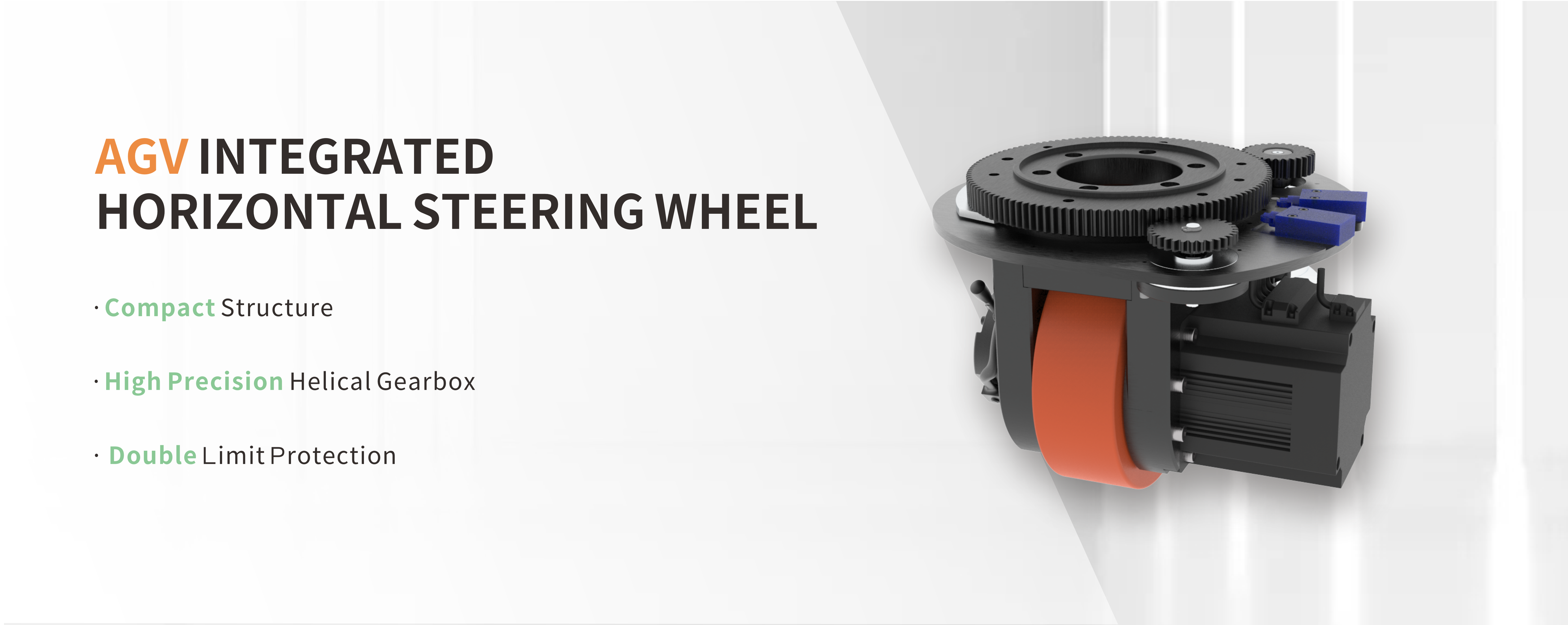As smart warehousing and flexible logistics continue to advance, steering performance has become a key factor in AGV chassis design. The layout and number of steering wheels determine the system’s agility, stability, and overall integration cost—especially in environments requiring omnidirectional movement and precise turning.
Let’s explore four typical AGV steering layouts, highlighting their functional strengths and best-fit applications to help select the most efficient drive configuration.

Single Steering Wheel: Basic Design for Fixed Paths
AGVs with a single steering wheel layout use one powered wheel for both driving and turning, while the remaining three are passive casters. This setup offers simple control and low cost, making it suitable for lightweight transport carts, such as medical supply carriers or track-following robots.
However, this configuration has limited turning flexibility and cannot rotate in place. It is not ideal for dynamic environments or tight warehouse navigation.
Double Steering Wheels: Balanced Performance for Warehouse AGVs
The dual steering wheel system is one of the most common AGV designs today. Two servo wheels positioned symmetrically allow for differential driving, enabling smooth turns and responsive movement. This structure supports path planning, real-time obstacle avoidance, and stable load handling.
Widely used in e-commerce fulfillment centers, factory automation, and industrial material transfer, this layout balances performance with cost-effectiveness for most medium-duty AGV applications.
Three Steering Wheels: Flexible Motion for Confined Spaces
By arranging three steering wheels in a triangular layout, the AGV gains quasi-omnidirectional movement, making it capable of navigating sharp corners and diagonal paths. This setup suits environments such as workshop transfer stations, exhibition displays, or indoor delivery bots.
Though the control logic is more complex, the maneuverability it brings is highly valued in developing intelligent AGV platforms.
Four Steering Wheels: High-End Omnidirectional Performance
Featuring independent drive and steering on each wheel, the four-wheel configuration delivers full 360° omnidirectional mobility. It allows the AGV to move laterally, rotate in place, or perform diagonal shifts with extreme precision.
This structure is the foundation of advanced warehouse robot platforms, especially those involved in dense shelf navigation, precision docking, or collaborative AMR chassis.
Final Thought
Selecting the right steering configuration is essential to building an AGV that meets your operational goals. Whether you're developing an entry-level solution or a high-performance omnidirectional system, we offer tailored drive systems including servo steering wheels, differential drive modules, and lifting & rotating modules to suit payloads from 300kg to 3000kg.
Let us support your AGV or AMR development with a smart, scalable drive foundation.

Share:
High-Precision Servo Lifting & Rotating Module for AGV/AMR
AGV Rollover Stability Study: Key Factors and Optimization Strategies